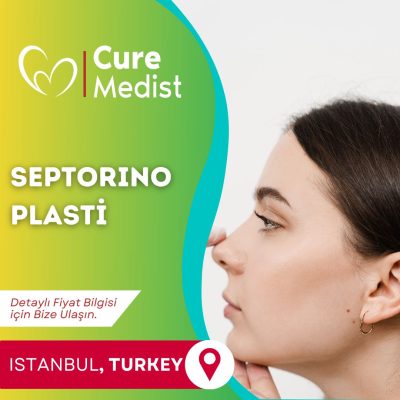Rhinoplasty, septoplasty, and septorhinoplasty are surgical procedures related to the nose, each with different purposes and techniques. Here’s an in-depth explanation of each procedure and their differences:
Rhinoplasty
Rhinoplasty, commonly known as a “nose job,” is a cosmetic surgical procedure designed to change the shape, size, or overall appearance of the nose. It can also address functional issues, such as breathing difficulties, but its primary focus is aesthetic enhancement.
Procedure:
- Anesthesia: Typically performed under general anesthesia or local anesthesia with sedation.
- Incisions:
- Open Rhinoplasty: Involves a small incision on the columella (the tissue between the nostrils) and additional incisions inside the nostrils.
- Closed Rhinoplasty: All incisions are made inside the nostrils, resulting in no visible scars.
- Surgical Steps:
- Reshaping the nasal bone and cartilage to achieve the desired appearance.
- Reducing or increasing the size of the nose, altering the shape of the tip or bridge, narrowing the nostrils, or changing the angle between the nose and upper lip.
Goals:
- Improve the aesthetic appearance of the nose.
- Enhance facial harmony and proportions.
- Correct deformities or asymmetries from trauma or congenital issues.
Septoplasty
Septoplasty is a surgical procedure focused on correcting a deviated septum, which is the cartilage and bone structure that divides the two nostrils. A deviated septum can cause breathing difficulties, nasal congestion, and other issues.
Procedure:
- Anesthesia: Usually performed under local anesthesia with sedation or general anesthesia.
- Incisions: Typically made inside the nostrils, resulting in no visible external scars.
- Surgical Steps:
- The surgeon repositions, reshapes, or removes parts of the septum to straighten it.
- Any obstructive tissue is removed or realigned to improve airflow.
Goals:
- Improve nasal airflow and breathing.
- Correct nasal obstructions caused by a deviated septum.
- Relieve symptoms such as chronic nasal congestion, sinus infections, and snoring.
Septorhinoplasty
Septorhinoplasty is a combined surgical procedure that addresses both the aesthetic aspects of the nose (rhinoplasty) and the functional issues related to the septum (septoplasty). This dual approach allows for comprehensive correction of both appearance and breathing problems in a single operation.
Procedure:
- Anesthesia: Performed under general anesthesia or local anesthesia with sedation.
- Incisions:
- Can involve both internal and external incisions, similar to those used in rhinoplasty and septoplasty.
- Surgical Steps:
- Combines the techniques of rhinoplasty and septoplasty.
- Reshaping the nose for cosmetic enhancement.
- Correcting the deviated septum to improve nasal function and airflow.
Goals:
- Achieve the desired aesthetic appearance of the nose.
- Improve nasal function and breathing.
- Address both cosmetic and functional issues simultaneously, reducing the need for multiple surgeries.
Differences
- Purpose:
- Rhinoplasty: Primarily cosmetic, focusing on changing the shape and appearance of the nose.
- Septoplasty: Primarily functional, focusing on correcting a deviated septum to improve breathing.
- Septorhinoplasty: Combines both cosmetic and functional purposes, addressing aesthetic changes and septum correction in one procedure.
- Techniques:
- Rhinoplasty: Involves reshaping bone and cartilage for aesthetic purposes.
- Septoplasty: Involves repositioning or reshaping the septum to correct deviation.
- Septorhinoplasty: Involves techniques from both rhinoplasty and septoplasty.
- Incisions:
- Rhinoplasty: Can be open (external incision on the columella) or closed (internal incisions).
- Septoplasty: Internal incisions only.
- Septorhinoplasty: Can involve both internal and external incisions.
- Outcomes:
- Rhinoplasty: Improved nasal appearance and facial harmony.
- Septoplasty: Improved nasal airflow and reduced breathing issues.
- Septorhinoplasty: Enhanced nasal appearance and function.
These procedures are often tailored to the specific needs and goals of the patient, and a thorough consultation with a qualified surgeon is essential to determine the most appropriate approach.





